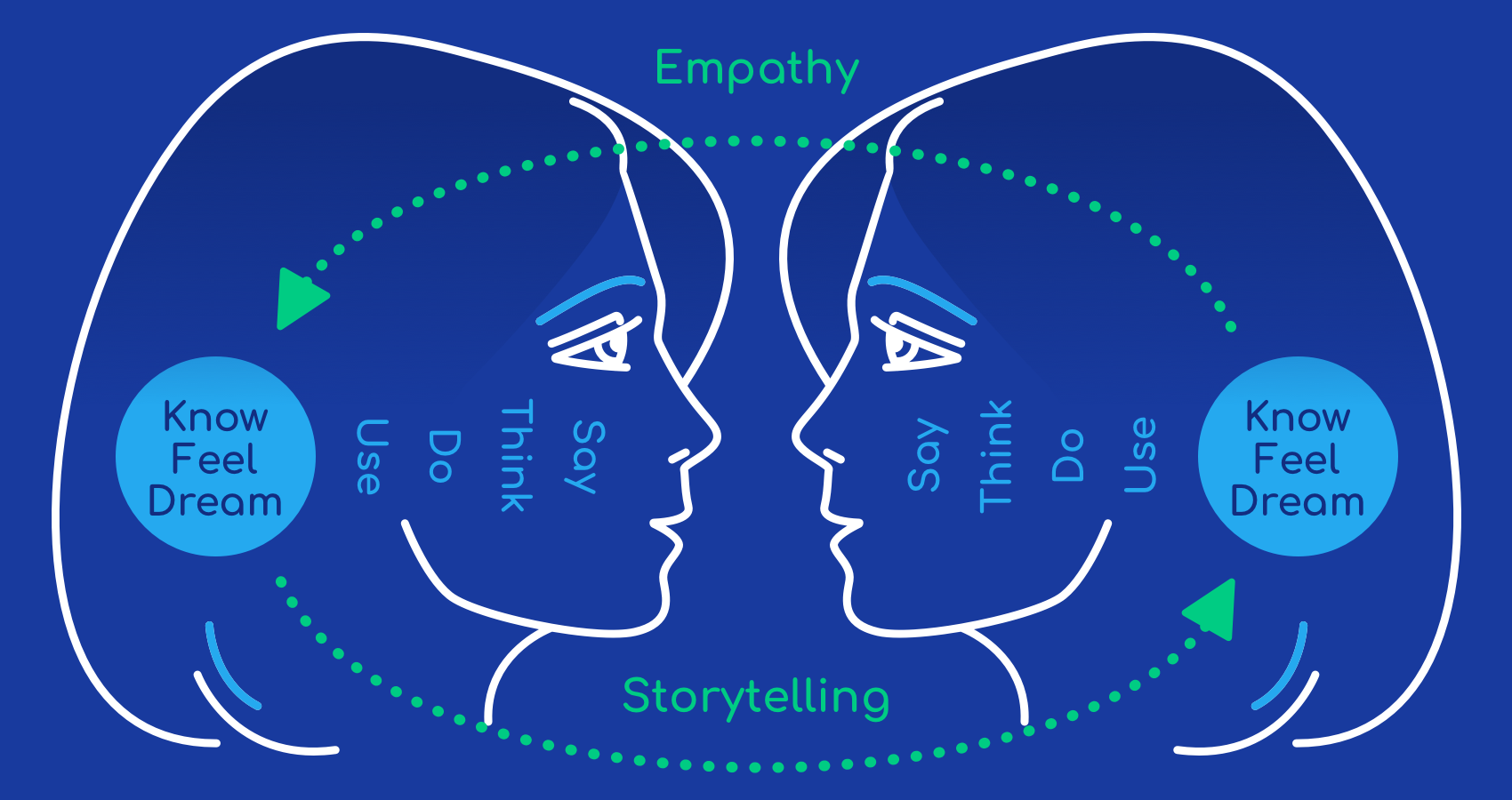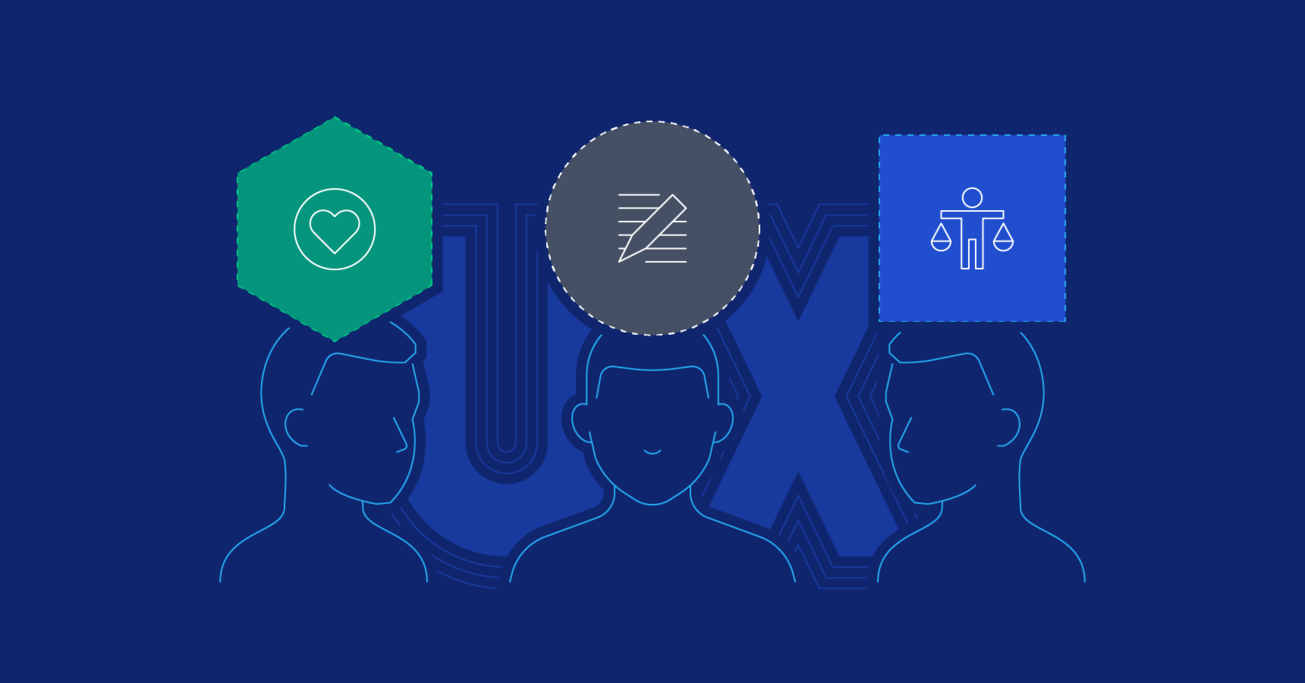The Future of UX Is Our Humanity
The future of UX lies in the ability of UX professionals to work at the intersection of technology while also mastering the craft of important human-centered design techniques.
The future of UX lies in the ability of UX professionals to work at the intersection of technology while also mastering the craft of important human-centered design techniques.
Brian is a human experience designer with over 17 years of experience focusing on digital products in healthcare, blockchain, and fintech.
PREVIOUSLY AT

“We spend a lot of time designing the bridge, but not enough time thinking about the people who are crossing it.” – Dr. Prabhjot Singh, Director of Systems Design at the Earth Institute.
The UX field has changed as new and emerging technologies dominate product development. However, the true value a UX professional brings to the design process doesn’t come from tech knowledge, but from human-centered skills, and in order for UX to continue to evolve, development of these “soft” skills is crucial.
As Tech Evolves, How Should UX Adapt?
Digital technologies like artificial intelligence (AI), mixed reality (MR), brain-computer interfaces (BCI), blockchain, and voice interfaces are changing the landscape of human-computer interaction, and services like The Grid, Felipe for Sketch, and UIzard show how an increasing share of design tasks are being automated.
But where does the advancement of tech-focused tools and techniques leave the UX professional?
The Story of Phil Tippett
Phil Tippett’s story is a great example of a successful adaptation to tectonic shifts in an industry’s technology. Tippett started his career as a stop-motion animator working on Star Wars, but his shift occurred on the set of Jurassic Park.
While Tippett was building the dinosaur models for the film, Steven Spielberg saw some computer-generated dinosaurs done by another team. Impressed, Spielberg decided to make the movie with CGI instead of stop-motion animation using models. As Tippett says in Vice’s My Life in Monsters, “Jurassic Park was actually the shot in the head that killed stop motion.”
So what was his role in this new world of CGI filmmaking? What value could he bring to the table in the face of this new, unfamiliar technology?

While at the time Tippett didn’t know about CGI, he was already an expert in everything else that goes into the craft of feature film creature animation and understood storytelling, movement, anatomy, and filmmaking—soft skills the new CGI animators didn’t have.
Spielberg brought him back onto Jurassic Park as effects director, where he reinvented the team’s process to incorporate the best of both worlds. The film won several visual effects awards, including an Oscar, and ushered in the age of Hollywood CGI.
When the technology shifted, Tippett successfully turned to the non-technical part of his craft: his human skills. He applied those skills in a strategic way, moving into a role working with people, rather than the technology. That is one of the directions UX professionals can take in the face of shifting technology.
Human-centered Creative Skills for UX Professionals
Tippet’s true value wasn’t his skill in molding clay or bending wire. His true value was his ability to help others use their technical skills to turn digital pixels into terrifying, yet satisfying experiences for audiences around the world.
A UX professional’s true value isn’t a proficiency with wireframing or prototyping; it lies in the understanding of human nature, the knowledge of which will help set the stage for meaningful experiences. This requires a deep insight into people’s needs, the ability to craft engaging narratives, and the use of ethical design to make better products.
What are some of the most important human-centered skills UX professionals can develop while also staying on the leading edge of technology? Empathy, storytelling, and design ethics.
Empathy
When we understand people’s needs, especially latent needs they aren’t consciously aware of, then we can build meaningful products and services for them. Empathy puts us in touch with those latent needs by allowing us to “listen” with our emotions.

Techniques
- Simulation: Creating an approximation of another person’s context (like MIT’s aging suit or VR experiences)
- Immersion: Inserting ourselves in another person’s real context (like Adrian Brody preparing for The Pianist or Drew Manning’s Fit2Fat2Fit)
- Sense memory: Simulating a person’s context with emotional, sensory imagination
- Directed free writing: Free writing, in character as another person or persona, about a topic related to the project
Empathy in Action
A great example of empathy is the Philips AVENT uGrow mobile app. The app is part of a digital service that helps new parents track their baby’s health indicators (e.g., temperature, sleeping, and breastfeeding).
While temperature can be measured by a connected smart thermometer, data about a baby’s sleeping and feeding habits need to be input manually by the parent. But a pilot study with real parents showed that the UI for tracking breastfeeding was too cumbersome, and mothers didn’t use it. This presented a problem because, without accurate tracking, the service was unable to provide effective guidance or insight into the baby’s health.
The UX designer on the project, who had no children of his own, needed to figure out why the mothers in the pilot study weren’t using the feeding tracker, and design a solution. After consulting with UX researchers on the team, he still wanted a deeper, more emotional understanding of the context in which the feeding tracker would be used.
He turned to acting techniques to build an empathic connection: sense memory and directed free writing. He began by writing a letter, in character as a new mother, to her new baby. After triggering that emotional state in himself, he conducted sense memory exercises to understand the basic realities of a new mother’s experiences—right before the moment she would feed her baby and use the app.

The exercises resulted in a better understanding of what was important to the mother as she prepared for, and during breastfeeding. He made it possible to use the screen with one thumb while the other hand was holding the baby, and moved nonessential data input behind an extra tap which simplified and focused the controls, thereby creating a new way to show content that didn’t interrupt tasks in progress. Feedback from the changes was positive and usage increased.
Storytelling
Just as empathy helps designers connect with a person’s latent needs, storytelling helps designers connect with people’s latent motivations. Stories can inspire people to change their behavior or help them engage emotionally with a product or service.

Storytelling Techniques
- Complete actions: Every micro-interaction must have a clear beginning, middle, and end.
- Narrative content strategy: Onboarding can go beyond intro slides and coach marks to create a story around how people will use a product or service.
- Dramatic tension: Friction or mystery can help propel a person further in their journey.
- Love Story Canvas: a workshop tool for planning habit-forming interactions that help increase emotional engagement over time.
Storytelling in Action
A great example of storytelling is when Philips created the Shaver 7000 series for men with sensitive skin. Philips realized that with a little coaching, the shaver could also help men with shaving-induced skin irritation (SIS). So they created a digital shaving coach as well as a smart shaver.
Seeing this project as an opportunity to leverage design storytelling, the UX lead hired a professional journalist and playwright as content strategist. Together, they created a character for both the “user” and digital coach, then wrote a story of how those characters’ relationship developed over time.

This evolving, dynamic narrative provided a framework for the team’s designers and developers to understand a person’s needs over time, create content to address those needs, and build a mechanism in the app to deliver each piece of content at exactly the right time.
The digital coach they created helped all the men in their pilot study to successfully reduce their shaving-induced skin irritation.
Design Ethics
The work of UX designers and developers can literally make the difference between life and death. This is a heavy responsibility, but also a great opportunity to build trust and differentiate themselves from less ethical competitors.

Design Ethics Tools
- Ethical Design Checklist: A focused tool to guide decision-making for ethical design
- Regret test: A simple heuristic for weighing the effects of design decisions
Ethics in Action
As an example of ethics we can turn to Philips and the EU’s General Data Protection Regulation (GDPR), which took effect in 2018.
Philips had a Privacy by Design policy as far back as 2014. A UX designer developed the policy and the requisite guidelines, together with engaged stakeholders from the business, Legal, and IT.
Philips quickly recognized their responsibility around privacy, since many of their apps and products collect medical data about the people who use them. And because Philips’ apps already used mechanisms like short-form privacy notices and explicit consent, unlike other companies, they didn’t have to change anything when the GDPR came into force.

Embracing the Future of UX
UX professionals are faced with a world dominated by technology, and it’s easy to be drawn in by the tools from the latest trend. However, in order to truly embrace and survive the future of UX, it’s important to master human-centered design skills while also striking a balance with UX technology.
Further Reading on the Toptal Blog:
Understanding the basics
Is UX design in demand?
UX design remains one of the most in-demand fields (in 2019). This is mostly true for senior level design positions as companies rely on outside talent for more specialized and tactical roles.
Is UX design a growing field?
UX design is growing and continues to see healthy growth patterns especially in more specialized areas such as user research. In many of the careers that are seeing growth, there is some element of UX knowledge involved.
Is UX a good career?
UX is a good career if you are willing to work on a team, share knowledge, and continually learn new technologies. It is also a good career if you have a passion for discovering and exploring human-centered solutions to complex problems.
What is the future of UX design?
The future of UX design lies in the UX professional’s ability to master human-centered design skills such as empathy, storytelling, and design ethics. Though technology trends come and go, understanding human needs and applying them to design is key to the survival of UX.
Brian Pagán, EngD, MSc
Amsterdam, Netherlands
Member since June 7, 2019
About the author
Brian is a human experience designer with over 17 years of experience focusing on digital products in healthcare, blockchain, and fintech.
PREVIOUSLY AT


